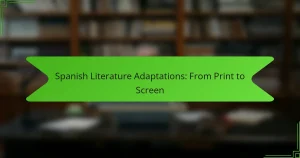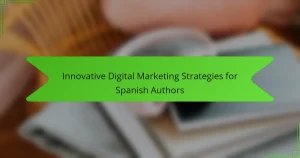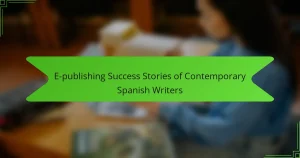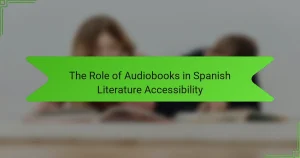The digital age has transformed Spanish literary genres by enhancing accessibility and encouraging diversity. Digital platforms foster new genres like blog literature and interactive storytelling. Social media influences literary trends through immediate feedback and engagement. Traditional forms are evolving with multimedia elements, while notable authors innovate within this dynamic landscape. Challenges such as visibility and cultural preservation shape the future of Spanish literature.
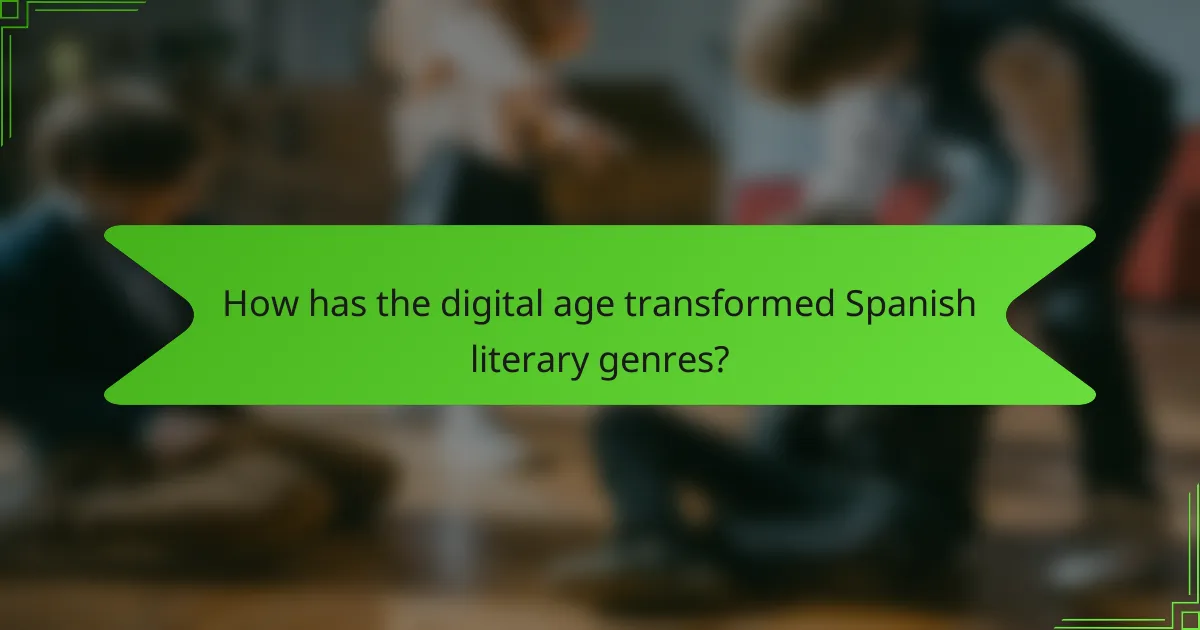
How has the digital age transformed Spanish literary genres?
The digital age has significantly transformed Spanish literary genres by enhancing accessibility and encouraging diversity. Digital platforms allow authors to reach wider audiences, fostering new genres such as blog literature and interactive storytelling. E-books and online publishing have democratized literary creation, enabling voices from various backgrounds to emerge. Additionally, social media has facilitated real-time feedback and engagement, shaping narratives and genres in response to reader preferences. This evolution reflects a unique attribute of contemporary Spanish literature, characterized by its adaptability and innovation in form and content.
What are the key characteristics of traditional Spanish literary genres?
Traditional Spanish literary genres are characterized by their rich history, diverse forms, and cultural significance. Key genres include poetry, prose, and drama, each evolving through historical contexts. Poetry, such as the sonnet, emphasizes musicality and emotion, while prose often reflects social themes. Drama, particularly from the Golden Age, showcases intricate plots and character development. These genres have adapted to modern influences, integrating digital elements while preserving their core attributes.
Which digital platforms have influenced the evolution of these genres?
Digital platforms like social media, e-books, and online literary journals have significantly influenced the evolution of Spanish literary genres. Social media fosters real-time interaction between authors and readers, shaping narrative styles. E-books provide accessibility, allowing diverse genres to reach wider audiences. Online literary journals promote experimental works, encouraging innovation in storytelling. These platforms have transformed traditional publishing, creating new opportunities for emerging voices in Spanish literature.
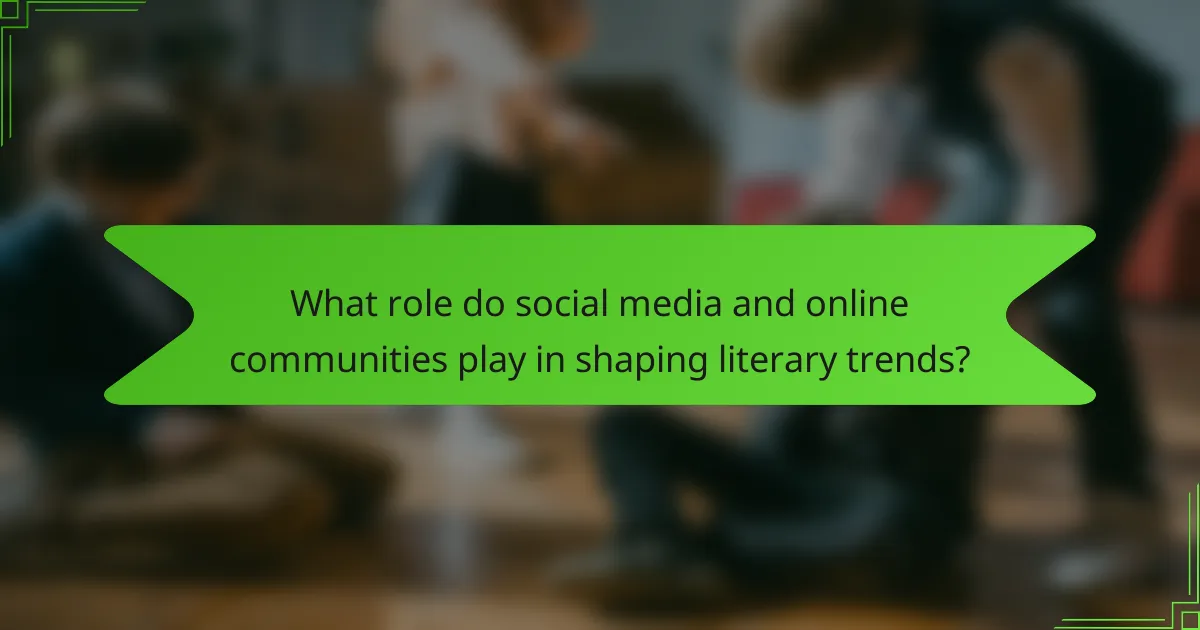
What role do social media and online communities play in shaping literary trends?
Social media and online communities significantly influence literary trends by facilitating immediate feedback and fostering diverse dialogues. These platforms allow writers to share their work widely, promoting genres like flash fiction and serialized storytelling. Additionally, reader engagement shapes content, leading to trends that reflect current societal issues. The unique attribute of social media is its ability to connect authors with audiences globally, creating a dynamic literary landscape. As a result, traditional genres evolve, incorporating digital formats and themes relevant to contemporary readers.
How do readers engage with Spanish literature in digital formats?
Readers engage with Spanish literature in digital formats through e-books, online platforms, and social media. Digital formats enhance accessibility and interactivity, allowing readers to explore diverse genres and authors. E-books provide convenience, while online platforms foster community discussions. Social media enables real-time engagement, promoting literary events and author interactions. This evolution reflects a shift in reader preferences, emphasizing immediacy and connectivity in literary experiences.
What are the emerging sub-genres within Spanish literature in the digital landscape?
Emerging sub-genres within Spanish literature in the digital landscape include digital poetry, interactive fiction, and online serialized novels. These forms leverage technology to engage readers uniquely. Digital poetry often incorporates multimedia elements, enhancing traditional poetry’s emotional impact. Interactive fiction allows readers to influence narratives, creating personalized experiences. Online serialized novels cater to audience demands for episodic content, fostering community discussions and reader engagement. Each sub-genre reflects the evolving relationship between literature and digital platforms, showcasing innovation in storytelling.
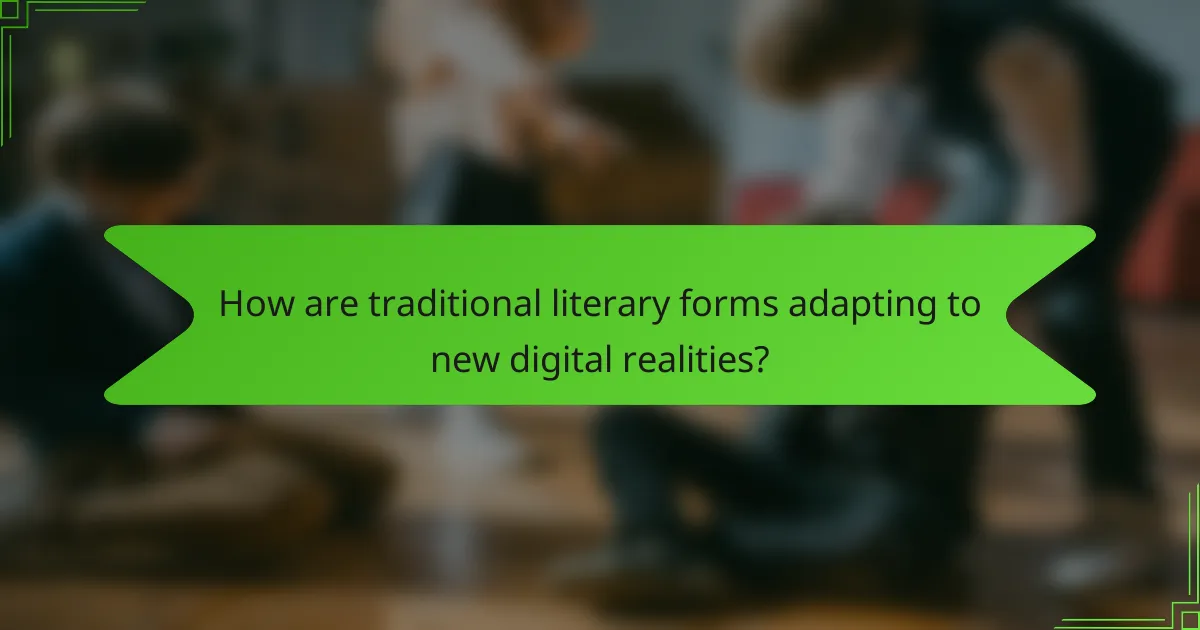
How are traditional literary forms adapting to new digital realities?
Traditional literary forms are evolving by integrating digital platforms and multimedia elements. This adaptation allows for interactive storytelling and broader audience engagement. For instance, Spanish literary genres are embracing social media, e-books, and online publications, transforming how narratives are created and consumed. Authors utilize digital tools to enhance storytelling, offering unique experiences that blend text, audio, and visuals. This shift not only democratizes access to literature but also encourages innovative expressions that reflect contemporary themes and issues. As a result, traditional genres like poetry and novel-writing are experiencing a renaissance in the digital age.
What innovations are authors incorporating into their works?
Authors are incorporating digital tools, multimedia elements, and interactive storytelling into their works. These innovations enhance reader engagement and expand narrative possibilities. For instance, authors are using social media platforms to develop characters and plotlines collaboratively with audiences. Additionally, augmented reality and virtual reality are emerging as unique attributes in storytelling, allowing immersive experiences. As a result, the evolution of Spanish literary genres is marked by a blend of traditional narratives with modern technology, creating a rich, dynamic landscape.
How does the accessibility of digital publishing affect genre diversity?
The accessibility of digital publishing enhances genre diversity by allowing more voices and styles to emerge. Digital platforms lower entry barriers for writers, enabling varied genres to flourish. Independent authors can explore niche themes without traditional publishing constraints, leading to innovative narratives. As a result, readers access a broader spectrum of genres, enriching the literary landscape in the Spanish-speaking world.
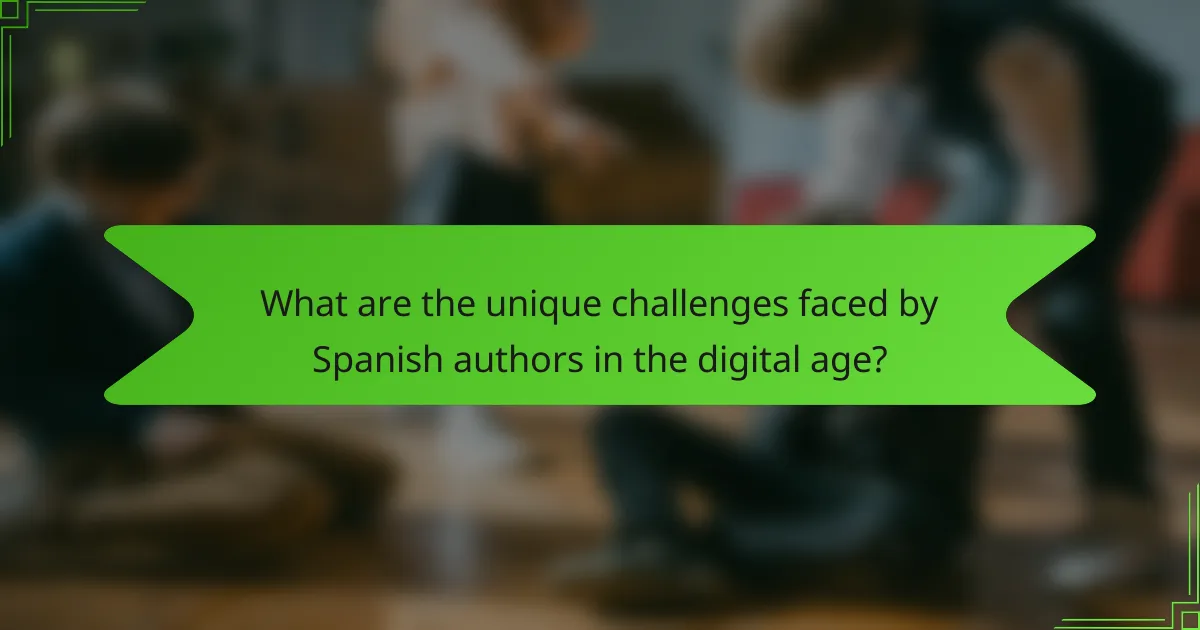
What are the unique challenges faced by Spanish authors in the digital age?
Spanish authors face unique challenges in the digital age, including visibility, monetization, and cultural preservation. The digital landscape has intensified competition, making it harder for new voices to gain recognition. Authors must also navigate shifting revenue models, as traditional publishing struggles to adapt. Additionally, preserving cultural identity in a globalized digital environment poses significant challenges for Spanish literature. These factors collectively shape the evolution of Spanish literary genres today.
How do copyright issues impact digital literary works?
Copyright issues significantly impact digital literary works by influencing accessibility, distribution, and author rights. The evolution of Spanish literary genres in the digital age highlights how copyright laws adapt to new formats. Digital platforms often face challenges in balancing copyright protection with the need for wider access to literature. As a result, authors may struggle to enforce their rights, leading to concerns over unauthorized distribution. The unique attributes of digital works, such as ease of duplication and sharing, complicate traditional copyright frameworks.
What are the common pitfalls for authors transitioning to digital formats?
Authors transitioning to digital formats often face several common pitfalls. These include underestimating the importance of digital marketing, neglecting the need for interactive content, and failing to adapt storytelling techniques for online audiences.
Many authors struggle with formatting issues, as traditional print styles may not translate well to digital platforms. Additionally, a lack of understanding of audience engagement in digital spaces can hinder success.
Technical challenges, such as navigating various publishing platforms and digital tools, can also pose significant barriers. Lastly, some authors may overlook the potential of data analytics to refine their approach and improve reader connections.
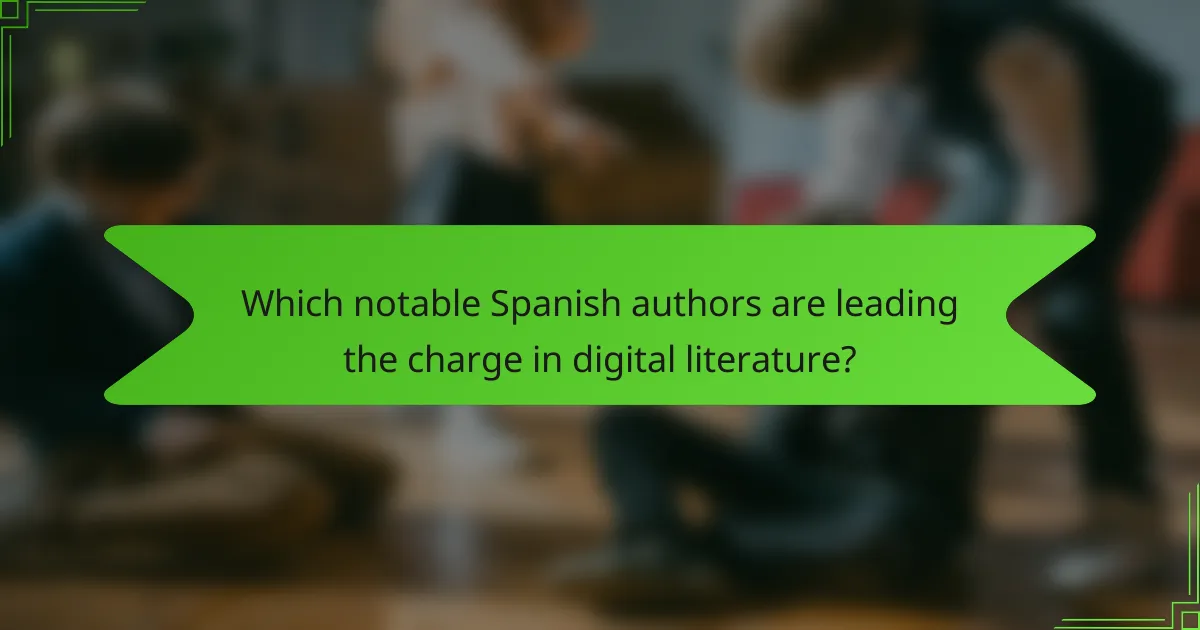
Which notable Spanish authors are leading the charge in digital literature?
Notable Spanish authors leading the charge in digital literature include Javier Marías, Rosa Montero, and Manuel Rivas. These writers embrace innovative storytelling methods and engage with audiences through digital platforms. Their works often explore contemporary themes, reflecting the evolution of Spanish literary genres in the digital age. For instance, Javier Marías utilizes online serialization to reach readers directly, enhancing accessibility and interaction.
What distinctive traits do their works exhibit in the digital context?
Spanish literary works in the digital age exhibit distinctive traits such as interactivity, multimedia integration, and accessibility. These characteristics enhance reader engagement and broaden the audience. Interactivity allows readers to influence narratives, while multimedia elements enrich storytelling through visuals and audio. Accessibility ensures that diverse demographics can access literature easily, fostering inclusivity. Unique attributes include the emergence of digital poetry and hypertext fiction, which differentiate contemporary works. As a result, the evolution of these genres reflects a significant shift in how literature is created and consumed in the digital landscape.
How are these authors utilizing technology to enhance storytelling?
Authors are utilizing technology to enhance storytelling by integrating multimedia elements and interactive features. Digital platforms allow for the incorporation of audio, video, and visual art, enriching the narrative experience. For instance, authors can use hyperlinks to provide additional context, creating a more immersive reading experience. Additionally, social media enables real-time interaction with readers, fostering community engagement and feedback. This evolution reflects a unique attribute of digital storytelling, where traditional literary forms adapt to new technological landscapes, enhancing both accessibility and creativity.
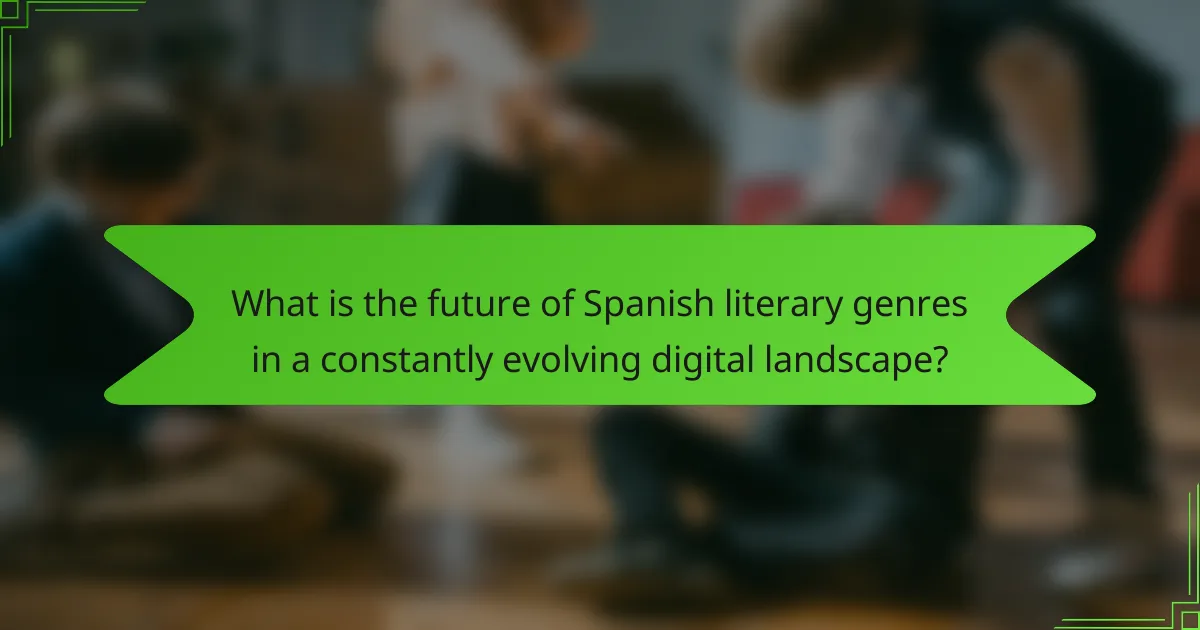
What is the future of Spanish literary genres in a constantly evolving digital landscape?
The future of Spanish literary genres in a digital landscape is dynamic and promising. Digital platforms enable diverse voices and innovative storytelling methods, transforming traditional genres. E-books and audiobooks increase accessibility, attracting wider audiences. Social media facilitates real-time engagement, allowing authors to connect directly with readers. Emerging genres, such as interactive fiction and transmedia storytelling, reflect evolving reader preferences. The integration of technology fosters creativity, encouraging experimentation within established genres. As a result, Spanish literature is poised for significant growth and diversification in the coming years.
What trends are emerging in reader preferences and consumption habits?
Emerging trends in reader preferences and consumption habits highlight a shift towards digital formats and interactive storytelling. Readers increasingly favor e-books and audiobooks due to their convenience. Additionally, social media platforms are becoming vital for discovering new authors and genres. Data shows that 60% of readers engage with book-related content online, influencing their purchasing decisions. The focus on inclusivity in literature is also gaining traction, as diverse voices resonate with wider audiences.
How can authors leverage digital tools for creative expression?
Authors can leverage digital tools to enhance their creative expression by utilizing platforms for collaboration, self-publishing, and audience engagement. Digital tools allow for real-time feedback, enabling authors to refine their work based on reader insights.
These tools also support diverse formats, such as multimedia storytelling and interactive narratives, which can enrich traditional literary genres. For example, authors can incorporate visual elements or audio components to create immersive experiences that resonate with modern audiences.
Moreover, social media and blogging platforms facilitate direct communication with readers, fostering a community around their work. This engagement can lead to a deeper understanding of audience preferences, guiding authors in their creative processes.
In summary, digital tools empower authors to innovate within Spanish literary genres, enhancing both the creative process and reader interaction.
What best practices should authors follow to succeed in the digital literary scene?
Authors should focus on engaging with their audience, utilizing digital platforms effectively, and embracing innovative storytelling techniques. Building a strong online presence through social media and blogs enhances visibility and connection with readers. Collaborating with other authors and participating in virtual literary events can foster community and expand reach. Consistently producing quality content and adapting to reader feedback is essential for success in the evolving digital literary landscape. Embracing diverse genres and formats allows authors to explore unique attributes that resonate with contemporary audiences.

